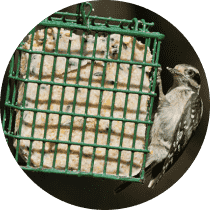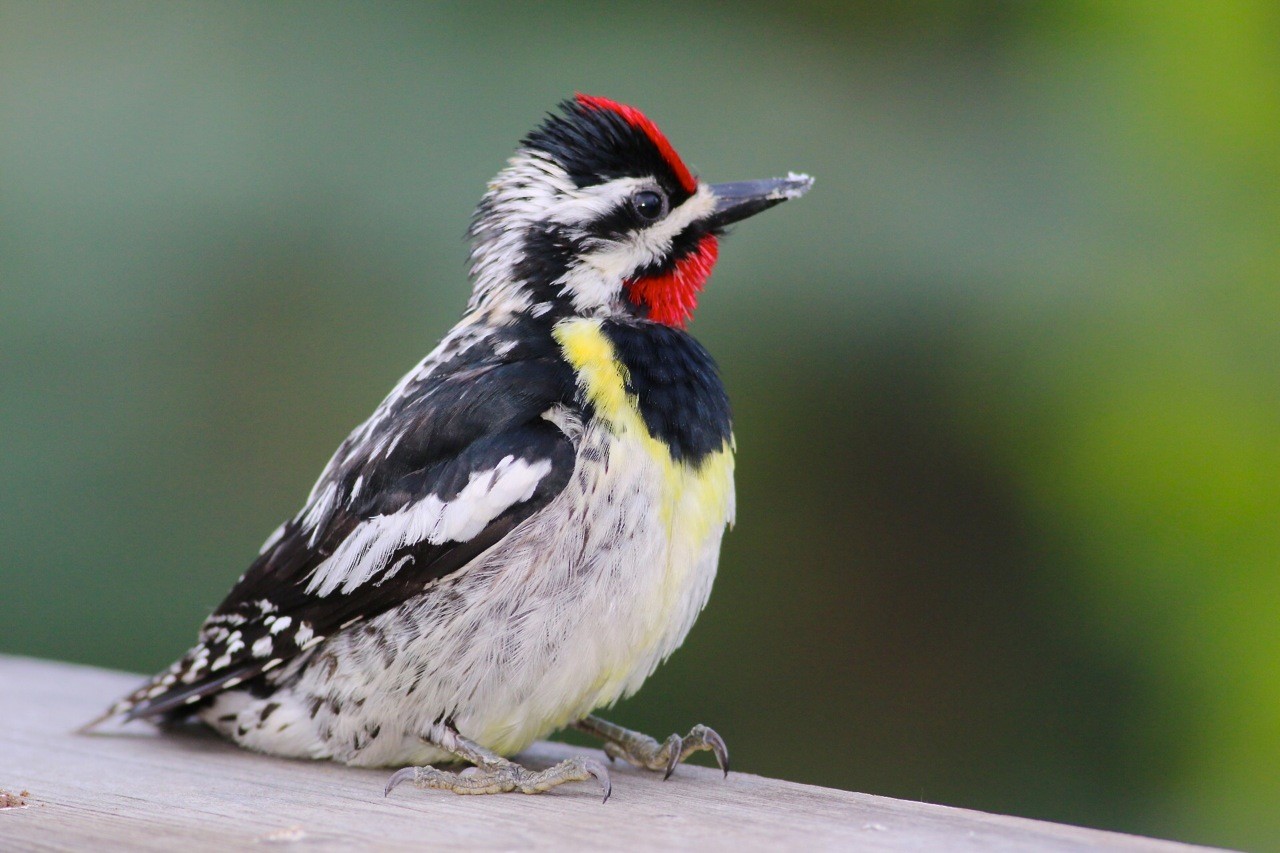Yellow-bellied Sapsucker
A species of Sapsuckers Scientific name : Sphyrapicus varius Genus : Sapsuckers
Yellow-bellied Sapsucker, A species of Sapsuckers
Botanical name: Sphyrapicus varius
Genus: Sapsuckers
Content
Description People often ask General Info
Description
The yellow-bellied Sapsucker makes holes in trees to collect sap. Once it leaves the hole other birds, bats, and even porcupines like to get the leftover sap from the hole. The yellow-bellied Sapsucker uses things like street signs and metal chimneys to tap at and let other birds know that this is its territory. The bird suffers no ill effects from whacking its beak against the metal. In fact, it will return day after day (to the misery of the humans perhaps sleeping near the tap-tapping) to the same metal to pound out its territory code.
Size
20 - 23 cm
Life Expectancy
6 years
Nest Placement
Cavity
Clutch Size
4 - 6 eggs
Incubation Period
1 brood
Number of Broods
10 - 13 days
Nestling Period
25 - 30 days
Feeding Habits
Primarily, yellow-bellied Sapsucker sustains on sap throughout the year, drilling narrow wells in tree xylem early spring, and shallower wells in the phloem later, favoring trees like birches, maples, and hickory. It also eats insects, especially ants, spiders, by gleaning bark or catching them mid-flight. Additionally, it feeds on fruits, nuts, tree bast, cambium, occasionally berries, and tree buds in spring, with insects constituting half of the adult diet during nesting season.
Habitat
Yellow-bellied Sapsucker's habitat includes diverse forested areas such as young regenerating forests, forest edges with rapid tree growth, and deciduous trees with decayed heartwood for nesting. During the non-breeding season, they also inhabit semi-open areas, pastures, clearings, and suburban spots. In winter, they prefer bottomland hardwood forests and avoid pure conifer stands, favoring environments with hickory, pines, and oaks, up to altitudes of 10,000 feet.
Nest Behavior
The male yellow-bellied Sapsucker predominantly carves the nest over 2-3 weeks, usually selecting the tree. Nest building starts in the early spring. Yellow-bellied Sapsucker lays eggs directly on the wood chip bedding. Both parents care for the brood, but nest engagement specifics vary.
Nest Characteristics
Yellow-bellied Sapsucker typically nests in live but decaying trees like aspen, birch, maple, beech, and elm. These trees have softer wood due to fungal infection, facilitating cavity excavation. Nesting holes are small, around 1.5 inches wide, with a depth of about 10 inches, and are often reused, with no nest lining except for wood chips.
Dite type
Insectivorous
People often ask
General Info
Feeding Habits
Bird food type

Suet

Mealworms
Bird Feeder Type

Suet Cage
Behavior
Yellow-bellied Sapsucker display fascinating behaviors, often seen hitching up and down trees, using their tail feathers for balance. Their unique flight pattern is characterized by a bouncing glide. Dominating their daily routine is the maintenance of sapwells, which involves diligent drilling, sap consumption, and defense against other species drawn to the sap. Yellow-bellied Sapsucker's peculiar courtship involves playful chasing and elaborate displays of raised head feathers and throat puffing. While they may reunite with past mates, their loyalty appears directed more towards their nesting site. Yellow-bellied Sapsucker also partake in aerial insect hunting and ground foraging, adding diversity to their feeding habits.
Distribution Area
The yellow-bellied sapsucker is found across Canada, eastern Alaska and the northeastern United States. These birds winter in the eastern United States, West Indies and Central America. This species has occurred as a very rare vagrant to Ireland and Great Britain. When this sapsucker is breeding, it is generally found in deciduous and mixed coniferous forests up to 2,000 metres (6,600 ft) in height. 
Species Status
The yellow-bellied sapsucker is considered to be least concern by the IUCN, even though it has a decreasing population. This is because of its large range of about 7,830,000 square kilometres (3,020,000 sq mi). In addition, it has a large population, being common in its range, although it is not easily seen when not breeding. It has low genetic diversity; about half of that of most birds. In the United States, yellow-bellied sapsuckers are listed and protected under the Migratory Bird Treaty Act, making taking, killing, or possessing it illegal without a permit. 
